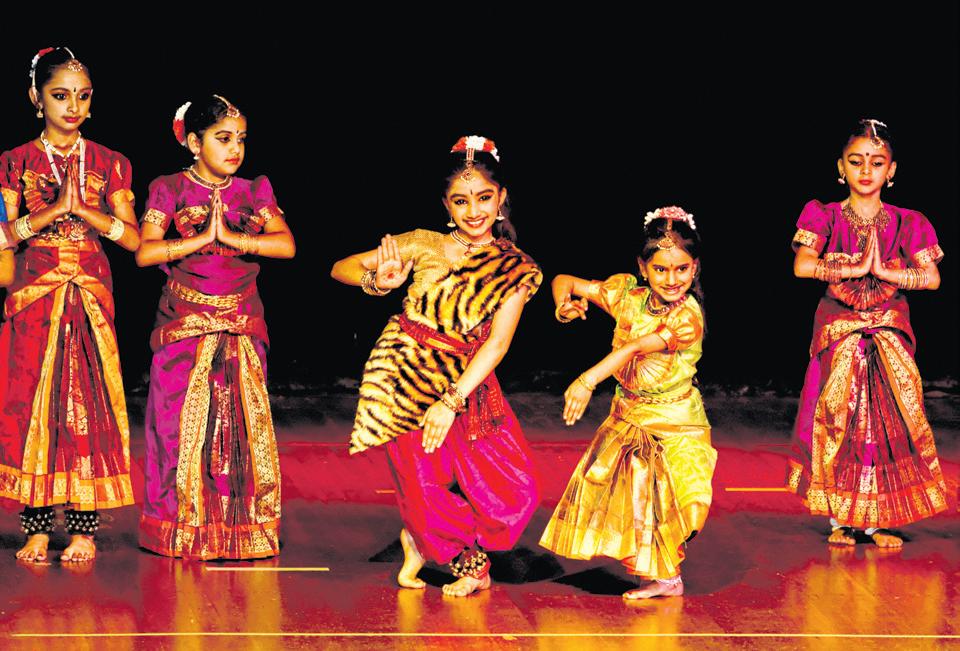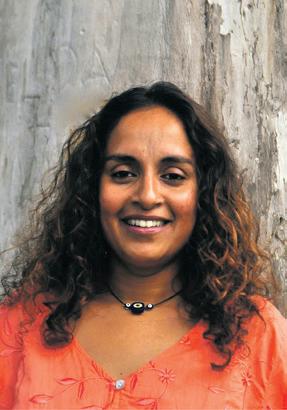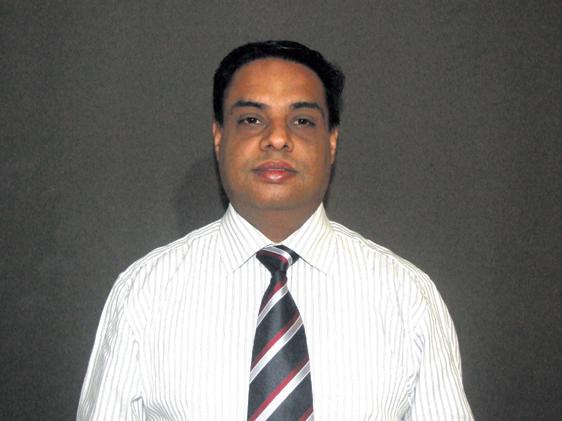
2 minute read
The classical tradition lives on
from 2012-08 Sydney (1)
by Indian Link
In a show that was aptly called Parampara, ie, ‘tradition’, Sydney danseuse Hamsa Venkat made it clear that our classical tradition continues to remain alive and well, even in a land far from home.

Students of her Samskriti School of Dance in Sydney performed recently to a packed audience at the Castle Hill High School.
More than a hundred dancers from among Hamsa’s students took to the stage that evening. They showcased their talent in an innovative format, incorporating many of the items usually performed in a more formal recital. Pushpanjali, Jatiswaram and Thillana were presented among others, but not Varnam. (In her introductory speech, Hamsa explained that none of the dancers had reached the Varnam stage yet).
The participants were of a broad variety with young children, girls in school and university, working girls, young professionals, even young mothers - what a medley! Usually, it is children that dance before their parents and eagerly await their approval. Here was a situation where young mothers danced and sought a nod of appreciation from their kids!
The girls introduced their items themselves. They had memorised their lines well, needing no piece of paper to prompt them, displaying not only confidence but also pride in their artform.
The dances were presented in groups of four to fourteen. Colourful costumes, interesting formations, pleasing expressions and gestures marked each sequence. Some of the girls were indeed very young, but their innocent dancing was appealing and their attempts were worth applauding.
In the joyous Jatiswaram, a group of fourteen dancers performed the abstract item with rich movements of the neck, eyes, ankle and limbs. It was a complex tala pattern and a delight to watch. In Jaya Jaya Shambho, the conclusion came out very well with young Shiva and Parvathi entertaining the audience, as the other dancers stood still.
Brochevarevarura was a treat to watch, and included the episode of Gajendra Moksha which was presented in the abhinaya style. The youngsters brought out a very convincing Sringapuradeeswari with rich expressions. Thillana performed by the senior students was very noteworthy. What was admirable was that the music accompanying the performance was live, provided by young artistes, many of them born and brought up in Australia. The alumni of the school (and also teachers) Divya Sriram,
IAAFA has been conducting monthly workshops in the past, on a series of different subjects, ranging from Aboriginal Arts with the renowned Uncle Greg, to Irish and Bollywood dancing classes, to help children integrate with and understand their culture and that of others, here in Australia. Their school holiday programs are extremely popular with sessions from 8am to 4pm, held on a voluntary basis and enjoyed by children of school-going ages. Children attending are introduced to fundamental yoga techniques, while guest speakers such as the NSW Fire Brigade or Police are invited to demonstrate their skills. Afternoon sessions usually include some mildly strenuous but fun activity such as dancing, to keep the children happy and motivated.
“We have been running these workshops to help children learn and understand more of their culture through the arts,” says Jay Hosur, IAAFA Secretary. “They are run on a voluntary basis with the help of parents and the special support from our well-wishers, who come and teach the children for free. We are now looking at more support from the community, and more parents to come forward and help run this program,” he adds.
Sneha Rao and Vidya Bharadwaj gave Nattuvangam. Devika Krishnamurthy was effortless in vocals, while Shruti Balaji also sang for some of the sequences. The most essential Mridanga support was presented by Nirmal Ayyar, while Anita Das performed on the violin. Well done, Hamsa, for infusing new blood into the classical scene in Sydney’s Indian community.
Sydney Srinivas












